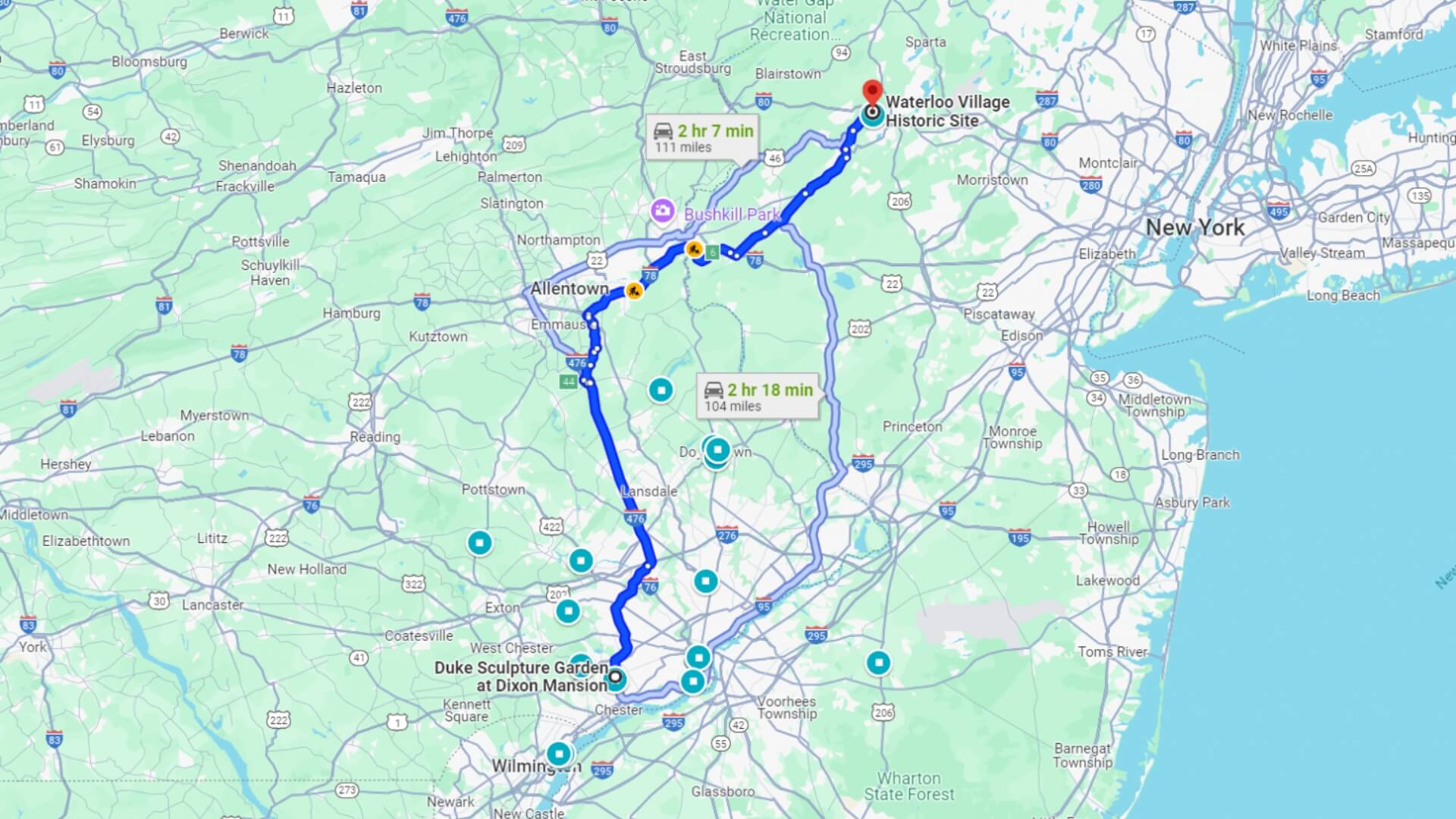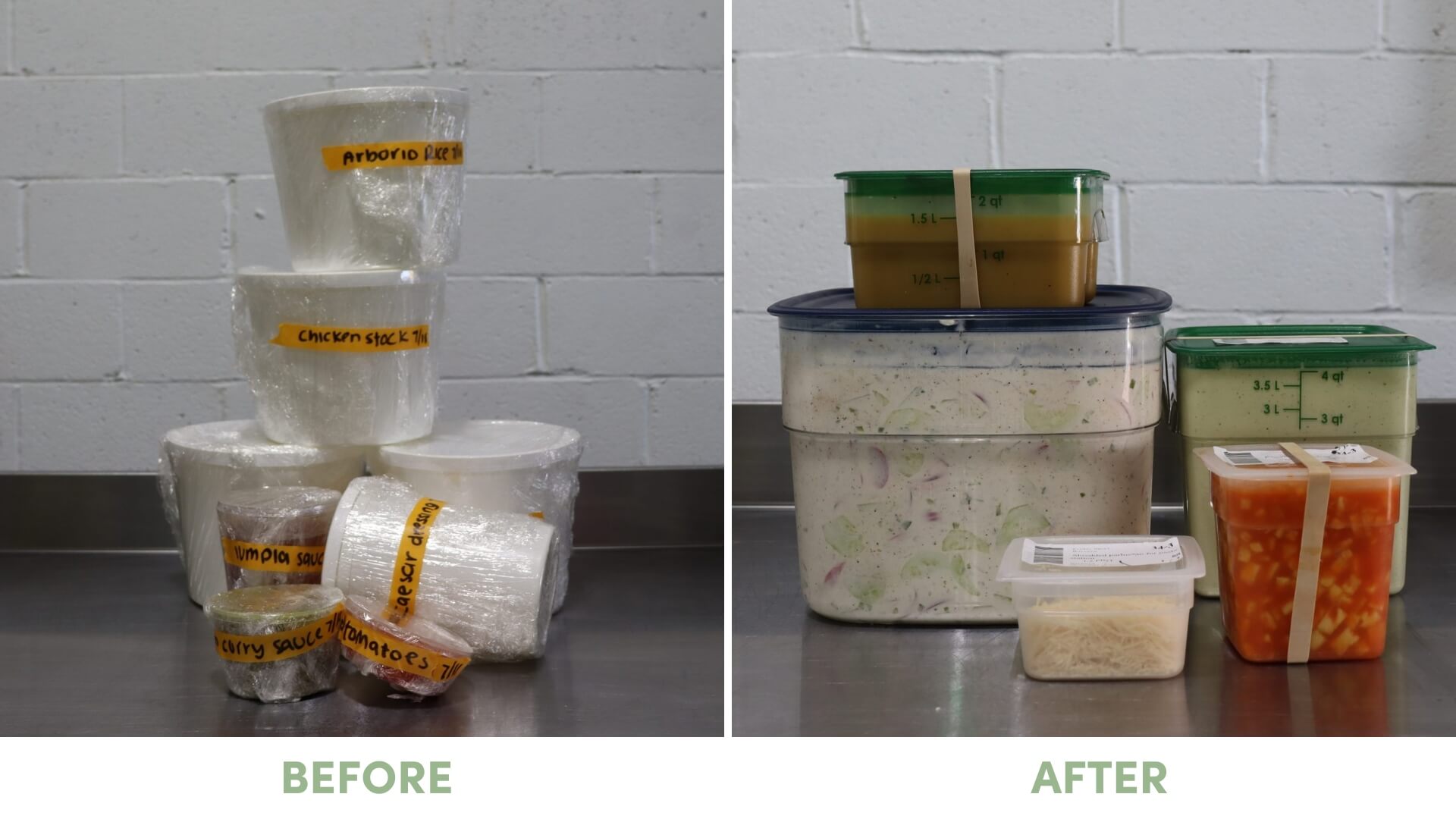New JAM Initiative Reduces Single-Use Plastic Waste!

As a busy catering company, JAM prepares thousands of meals each month. We make it all as individual components, which get packed, loaded onto trucks, transported, unpacked, assembled, and finished just before service. Many of these items make the journey in plastic “deli” containers of various sizes, similar to what you might buy, say, a pint of sour cream in, or a quart of potato salad.
Catering trucks can be bouncy, so we typically swath each container in several layers plastic wrap, just in case the lid decides to come loose or crack or leak for some other reason. In the catering biz this is called “cater wrapping” and it’s something almost every caterer working with freshly prepared food does to protect food in transit.
In 2023, we purchased 171 boxes of 18-inch plastic wrap to support our catering wrapping ‘habit.’ At 1,000 yards per box, that’s over 97 miles of plastic wrap—just a little shy of the distance between our venues, The Duke Sculpture Garden and Waterloo Village.

